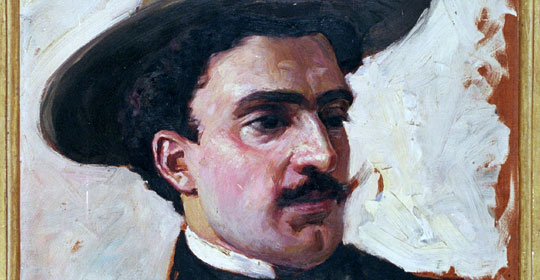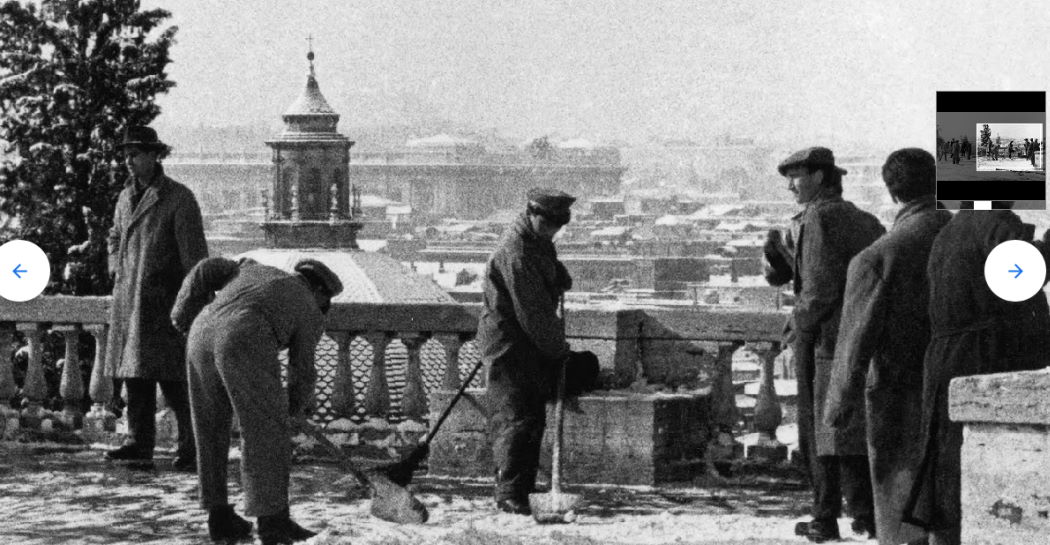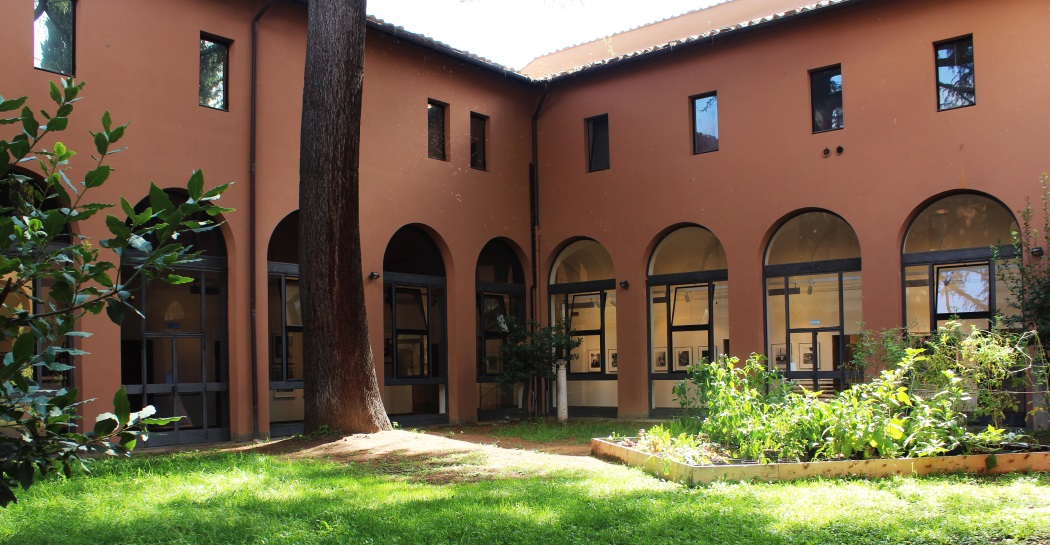Biographical Notes about Trilussa
1871 - 1886
Carlo Alberto Camillo Salustri was born in Rome on the Via del Babuino, on the 26th October 1871. Much has been written about the date of Trilussa’s birth, as he had the habit of shaving several years off his age. Indeed, among his personal papers, were found four passports, each of which had a different date, oscillating between 1871 and 1874. His father was a waiter called Vincenzo, originally from Albano Laziale; his mother, Carlotta Poldi, was from Bologna, and worked as a dressmaker. In 1872 his little sister Isabella died of diphtheria at three years old. In 1874 his father died and the family moved first to the Via di Ripetta, then to Piazza di Pietra, in the Palazzo of the Marchese Ermenegildo Dei Cinque Quintili, Carlo’s godfather. From 1880 to 1886 he attended elementary school, first at the Collegio San Giuseppe, and then at Angelo Mai.
1887 - 1899
Once he had finished school, Carlo developed a passion for the sonnets of Belli and Zanazzo, the founder and director of “Il Rugantino”. It was in fact in n. 7 of the papers of Roman folklore that his first sonnet The invention of printing was published. Thus began his collaboration with several Roman journals, such as “Capitan Fracassa”, “Don Chisciotte”, “Travaso delle Idee”, and “Il Messaggero”, where he began to sign his work with the pseudonym Trilussa, an anagram of his surname. In 1888 he published in “Il Rugantino” a collection of dialect verse, dedicated to twenty pretty women, entitled Le Stelle di Roma (The stars of Rome), which, however, was harshly criticised because it did not use the real trastevere dialect. In 1890 and 1891 he complied two Roman dialect almanacs Er mago de Borgo (the wizard of the Borgo); in 1895 he published, at the Voghera publishing house, Quaranta sonetti (Forty sonnets), illustrated by Gandolin; in 1896 Altri sonetti (Other sonnets), came out under the auspices of the Folchetto press.
1900 – 1920
Published by the Voghera press, Le favole romanesche (Roman fairy tales) and Caffè concerto (Coffee concert) and in 1903 Er serrajo. In the same year he took part in an “Italian dialect tournament” in Milan. In the following years he competed with some success in various tournaments with other dialect poets in a number of Italian cities (Padova, Brescia, Ferrara). During these years several more books came out, all edited by Voghera, Le favole (The fairy stories: 1908), I Sonetti (The sonnets: 1909), Nove Poesie (New Poems: 1910), Le storie (The histories: 1912). In 1913 the editors Carra and Bellini published, without his consent, Le Stelle di Roma (The Stars of Rome), which was given the title …a tozzi e bocconi (…bites and morsels). He published Le funzioni della vita (The functions of life: 1918) with the Cappelli di Bologna Press, Lupi e agnelli (Wolves and Lambs: 1919) with Voghera, Le favole (The fairy tales: 1920) with Modernissima.
Trilussa was already famous, and it was at this point that he met the love of his love, a Trastevere girl who had shot to fame as cinema star, using the name Leda Gys. In Rome he lived in Via Maria Adelaide, in a rather bohemian studio-flat, designed by Hermann Corrodi. It was a huge room, crowded with objects of every type: bizarre pieces of furniture, exotic souvenirs, stuffed animals, rugs, paintings, books, photographs, musical instruments, statuettes and many caricatures. In this “room of marvels” Trilussa daily received his friends, aspiring poets, admirers and journalists. He never shared his eccentric residence with anyone, except for his cat Pomponio – he was known for his great love of animals – and his loyal nanny Rosa Tomei.
1921 - 1932
In 1922 the Mondadori press began to publish “collections” of Trilussa’s works: Lupi e agnelli, Le favole, Nove poesie, Le cose, I sonetti, Le storie, Ommini e bestie. (Wolves and lambs, The fairy tales, New poems, Things, The Sonnets, The histories, Men and Beasts). His writings were known and acclaimed throughout Italy, Europe and even in Argentina, where, in 1924, he received a triumphal welcome.
Now, thanks to his verse, he was living well. Dressed in classic provincial style, with a cheap cravat and carefully tended moustaches, he visited the salons, the theatres, the fashionable cafes and the inns, where he always scored great success, especially with the female public. Moreover, among those who visited him were included intellectuals such Marconi, Mascagni, D’Annunzio, Mondadori, D’Amico, Leoncavallo.
In 1927, going full steam ahead, Asvero Gravelli republished twenty-three of his fairy tales, which he entitled Facist Fairy Tales, because «…they have a spirit that loves clarity and purity, which can well be called fascist».
In reality Trilussa the political ticket, as well as the definition “antifascist”: his opposition to the regime was known but silent. Some have put Trilussa’s name next to that of Benedetto Croce for the way in which his antifacism was manifested. These are the words that Croce wrote to the poet – the two had been introduced by the Neapolitan playwright – thanking him for the gift of a book: « Ringrazio del diletto procurato e che non è stato solo diletto, ma anche una tal commozione come di un ritorno ad un’arguzia e a un riso che ora non risuonano più in mezzo a tanta musoneria per tragedia ed epopea». (I thank you for the delight you have procured for me, which is not only a delight, but also creates an emotion similar to returning to a witticism or laughter that cannot now resound in the midst of such moroseness for tragedy and epic.)
Also in 1927 he published the prose work Picchiabbò ossia La moje der ciambellano (Picchiabbò, the Chamberlain’s wife: ed. Fauno). Meanwhile Mondadori published La gente (The people: 1929) and La porchetta bianca (The white roast pork: 1930).
The Formiggini press published various of his juvenile poems under the title Campionario (Sample Book) and a small volume of anecdotes called Pulviscolo (Dust).
He additionally wrote texts for Petrolini and Fregoli, but despite these collaborations he began to suffer from financial problems. In 1932 he published Giove e le bestie (Jove and the animals) with the Mondadori press.
1933 – 1950
Mondadori published Cento favole (A hundred fairy tales: 1934), Libro muto (Silent book: 1935), Duecento sonetti (Two hundred sonnets: 1937), Lo specchio ed altre poesie (The mirror and other poems: 1938), La sincerità e le altre fiabe nove e antiche (Sinceroty and other tales, new and old: 1939).
In 1944 his last collection, Acqua e vino (Water and wine) came out.
In 1935 Silvio D’Amico devoted a critical profile to him.
His financial circumstances became increasingly precarious, and his health began to fail, as he suffered from asthma. Already he rarely went out and almost never received at home anymore, renouncing even his beloved glass of Frascati wine. Rosa Tomei attended him admirably, working as secretary and nurse. On the 1st December 1950, the President of the Republic Luigi Einaudi nominated him as a life senator for “high merit in the literary and artistic fields” and he commented, addressing Rosa “We are rich”. He did not however have time to benefit from the long due award: he died just twenty days later, on the 21st December 1950. He did not even see his final wish realised: his poems were only published in one volume posthumously, in 1951.







































